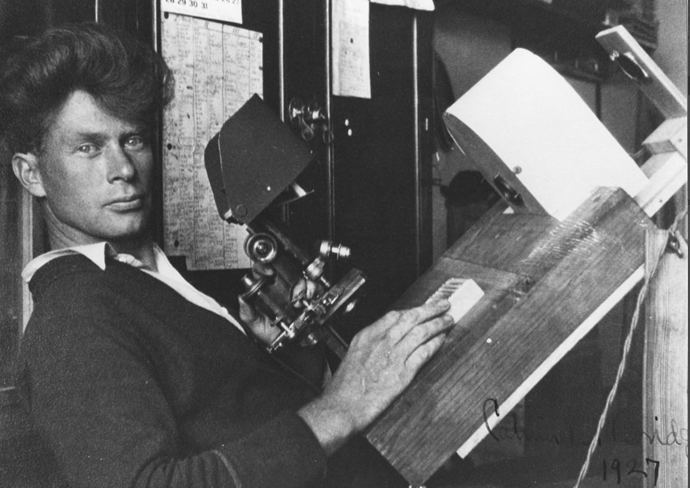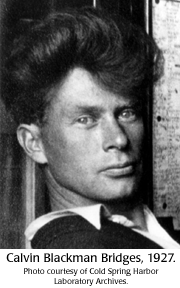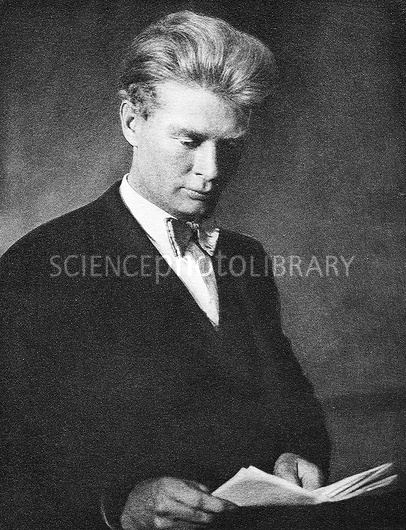Nationality American | Role Scientist Name Calvin Bridges | |
 | ||
Born January 11, 1889Schuyler Falls, New York ( 1889-01-11 ) Died December 27, 1938, Los Angeles, California, United States Books The third-chromosome group of mutant characters of Drosophila melanogaster | ||
Calvin bridges come as you are official video
Calvin Blackman Bridges (January 11, 1889 – December 27, 1938) was an American scientist, known for his contributions to the field of genetics. Along with Alfred Sturtevant and H.J. Muller, Bridges was part of the famous fly room of Thomas Hunt Morgan at Columbia University.
Contents
- Calvin bridges come as you are official video
- the power of your love 1978 calvin bridges
- Early life
- Work and Research
- References

the power of your love 1978 calvin bridges
Early life

Calvin Blackman Bridges was born in Schuyler Falls, New York in 1889 to the parents of Leonard Bridges and Charlotte Blackman. Tragically, Calvin's mother died when he was two years old, and his father died a year after his mother's death, leaving Calvin Bridges an orphan. Following the death of his parents, Bridges was taken in and raised by his grandmother. Despite now being known in the scientific world as one of the most influential researchers regarding Drosophila melanogaster, it took Bridges several years to complete high school, graduating when he was 20 years old. However, despite this setback, Bridges moved on to be an outstanding student at Columbia University, which he attended both for undergraduate and postgraduate school. While taking a zoology class, Bridges met Thomas Hunt Morgan. This started a relationship which would lead to many important discoveries in the scientific world regarding genetics and evolution. Calvin Bridges went on to marry Gertrude Ives and have four children. Bridges was known to be both brilliant and very kind and considerate. However, it should be noted that he was equally well known for his womanizing and struggles to keep up with family obligations. He was an atheist. In 1938 he died of an infection to his pericardium.
Work and Research

The "Fly Room" experiments began in 1910, with Thomas Hunt Morgan being the main experimental developer. Those working alongside Bridges and Hunt included Alfred Sturtevant and Hermann Joseph Muller. The "Fly Room" experiments took place for seventeen years, yielding significant results in regards to the field of genetics. "Fly Room" experiments used the common fruit fly Drosophila melanogaster because they are cheap, accessible, and reproduce quickly. The "Fly Room" experiments resulted in discoveries that explained many issues such as sex chromosome linkage, genetic information in chromosomes, and chromosomal arrangement. These men also contributed to the understanding of mutations on evolution and genetics in general.

Calvin Bridges was responsible for many improvements regarding the techniques and the equipment used in the "Fly Room" experiments. He suggested the men use binocular microscopes instead of the hand lenses they had been using before, which improved data quality. Bridges also developed temperature controls for the experiment which proved to be more useful and yielded better results than the previous temperature controls.
Bridges published many works, one of his most famous being "Sex in Relation to Chromosomes and Genes". Also, Bridges contributed many items to the Journal of Experimental Zoology and Science. He was also elected to the National Academy of Sciences in 1936 for his work with Drosophila.
Bridges wrote a masterful Ph.D. thesis on "Non-disjunction as proof of the chromosome theory of heredity.", which appeared as the first paper in the first issue of the journal Genetics in 1916. In this paper, he also established that the Y-chromosome does not determine gender in Drosophila.
His work with sex-linked traits in the fruit fly Drosophila melanogaster suggested that chromosomes contained genes. Later Nettie Maria Stevens was able to support this hypothesis by examining the chromosomes of the fruit flies. Bridges wrote a couple of papers presenting the proof. He thanked her as "Miss Stevens" without stating what her contribution was nor referring to her PhD.
After his death, Bridges' student Katherine Brehme Warren completed work on The Mutants of Drosophila melanogaster (1944), a classic book which was for two decades an indispensable resource for geneticists, with information from the "Red Book" later being captured to the FlyBase database. Morgan and Sturtevant destroyed almost all of Bridges' notebooks after his death, except four not in their possession.
Bridges' best-known contribution among Drosophila researchers is his observation and documentation of the polytene chromosomes found in larval salivary gland cells. The banding patterns of these chromosomes are still used as genetic landmarks even by contemporary researchers.
